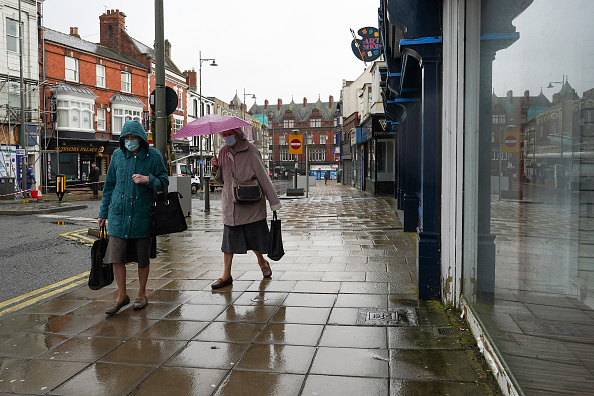Cost of living crunch to derail UK economy in bruising day for living standards

A double whammy of bad news today laid bare the scale of the blow the cost of living crisis will deal the British economic recovery, with the energy price cap set to spike by 54 per cent and GDP forecasts slashed by the Bank of England.
Ratesetters at Threadneedle Street hiked the interest rate to 0.5 per cent in a bid to tame rampant price rises, but warned inflation will now top seven per cent in April.
That higher level of inflation, around two percentage points higher than previously expected by the Bank, will saddle Brits with the worst rate of real income erosion since 1990.
The fresh estimates mark another u-turn by the Bank, which has during the Covid-19 crisis repeatedly miscalculated the scale of price rises in the UK economy.
December’s 5.4 per cent inflation rate came in 0.8 percentage points higher than Threadneedle Street projected.
The upward revision was triggered by the Bank warning today’s energy price cap hike will fuel inflation further down the line.
The adjustment, announced by the energy watchdog this morning, will deal a near £700 jump in energy bills to tens of millions of households across the country, illuminating the scale of the cost of living crunch sweeping across Britain.
The hit is so severe that Chancellor Rishi Sunak was forced into yet another giveaway yesterday, including a £200 energy bill discount and most households receiving a further £150 Council Tax rebate from April.
Experts warned soaring wholesale gas prices that have forced the regulator, Ofgem, to saddle Brits with higher bills are unlikely to ease anytime soon.
As a result, Ofgem will lift the cap again in October, according to Craig Lowrey, senior consultant at Cornwall Insight.
Real household incomes will shrink two per cent this year – five times the amount they dropped during the financial crisis in 2008 – as a result of higher energy and food prices and a heavier tax burden, the Bank said.
GDP growth this year was downgraded to 3.75 per cent due to “households cut[ting] back on spending in the face of the material adverse effects on their real incomes,” the Bank said.
In a bid to tame rampant inflation, Threadneedle Street hiked interest rates 25 basis points to 0.5 per cent today, the first time it has raised rates at successive meetings since 2004.
Four members of the nine-strong rate setting committee wanted to go further, favouring lifting rates 0.5 percentage points, in a sign of how agitated some of the Bank’s officials are about runaway inflation.
Governor Andrew Bailey, who voted for a 25 basis point rise, said “some big underlying drivers” of inflation “are not things that monetary policy can influence”.
Analysis
Well, that was certainly a gloomy day. Inflation peaking at 7.25 per cent; a near £700 rise in energy bills for hundreds of millions; the worst reduction in real incomes since 1990. Truly alarming.
But, if you think the bad news stops now, think again. These are all just announcements. They haven’t even taken effect yet.
Most of the rise in inflation is being caused by a sharp jump in energy bills to account to soaring wholesale gas prices.
Worryingly, though, is the wider shock the intensifying inflation crunch will deliver to the UK economy.
The Bank of England’s reasoning for revising down its 2022 GDP growth forecasts from five per cent is anchored around an expected drop off in household spending.
Given the UK relies on services firms to generate around 80 per cent of output, it’s easy to see how damaging this cost of living crisis could be.
Brits are under pressure on several cost fronts, worsened by a national insurance hike in April.
It’s understandable that “animal spirits” are in such short supply.